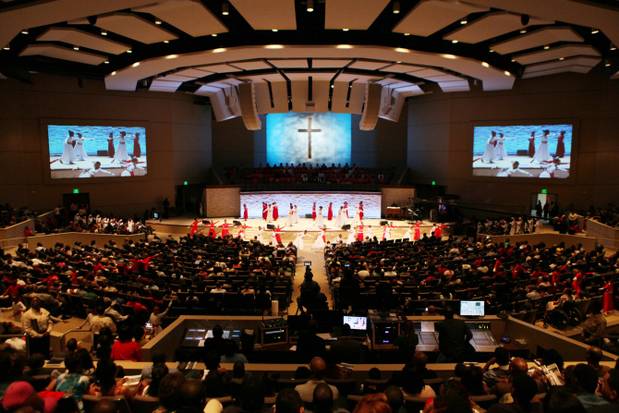Singing Down Walls of Race
The issue of Liturgy dealing with “Pentecostal Worship,” guest-edited by Tanya Riches and L. Edward Phillips, looks at many aspects of the topic, including the use of music to create what Pentecostals value as “worship music.” What follows is an excerpt from Birgitta J. Johnson’s essay on how musical choices influenced the growth of an African American church in California. –– Melinda Quivik
~~~
In 2003, I began a seven-year ethnographic study of the Faithful Central Bible Church, where I observed how the musical practices that supported their African American Christian worship traditions were being maintained given that they had grown from a congregation of 200 members in 1982 to over 10,000 by 2000. I also examined how newly emerging, worship-centered contemporary gospel music and CCM songs were tangentially being embraced alongside neo-Pentecostal and charismatic theologies by a church with roots in the Missionary Baptist denomination. Since the late 1980s, Faithful Central has grown as its congregational worship developed around the concept of “music as worship,” with music serving as an important and nearly equal partner to the preaching of the Gospel in weekly church services. Just as music unites members of the congregation to embody the preached word in their everyday lives, music-making and shared worship experiences have also inspired several collaborations with congregations and believers of different racial, ethnic, language, and even denominational heritages.
One of the highlights of weekly worship at the Faithful Central Bible Church in Inglewood, California, is its Spirit-filled opening praise and worship. Typically led by worship leaders Jimmy Fisher or Kurt Lykes and any of the church’s three praise teams, the musical worship includes prayer and three songs from gospel-styled praise and worship music to “gospelized” interpretations of contemporary Christian music (CCM) praise and worship songs. One popular tune at Faithful Central is the massively successful “You are Good,” by Israel Houghton and New Breed, released in 2001. In addition to its infectious funk- and rock-driven grooves and lyrics that draw on several well-known psalms from the Bible, one lyric in particular stood out at Faithful Central . . . : “People from every nation and tongue, / from generation to generation. / We worship you. / Hallelujah ... ”
These lines noticeably shifted the atmosphere of praise and celebration to a new level because the guest choir was the 100-voiced Tokyo Mass Choir from Japan. Although “You are Good” is a staple in Faithful Central’s musical repertoire, those opening moments of church worship showed that the desire to reach the world was not just the domain of television evangelists or the White evangelical groups that have dominated mainstream and Christian media over the last thirty years. Not only was cross-cultural and even multilingual worship attainable, it was welcomed in this African American megachurch in one of Los Angeles’ edge cities. . . .
In 1953 when Martin Luther King, Jr., was an associate pastor of Ebenezer Baptist Church in Atlanta, Georgia, he declared: “I am [ashamed] and appalled that eleven o’clock on Sunday morning is the most segregated hour in Christian America.” While that still is the case in many US congregations, within a growing number of church contexts that fact is becoming less the norm in at least two ways. First, the expansion of ministries and worship services . . . means that congregational worship is no longer confined to Sunday mornings. Second, multiracial and multicultural Christian worship events occur in a variety of settings.
Dr. Johnson’s full essay in Liturgy 33, no. 3 is available by personal subscription and through many libraries.
Birgitta J. Johnson is assistant professor of ethnomusicology, University of South Carolina, Columbia. See https://tinyurl.com/birgittajohnsonUSC.
Birgitta J. Johnson, “Singing Down Walls of Race, Ethnicity, and Tradition in an African American Megachurch,” Liturgy 33, no. 3 (2018): 37-45.


